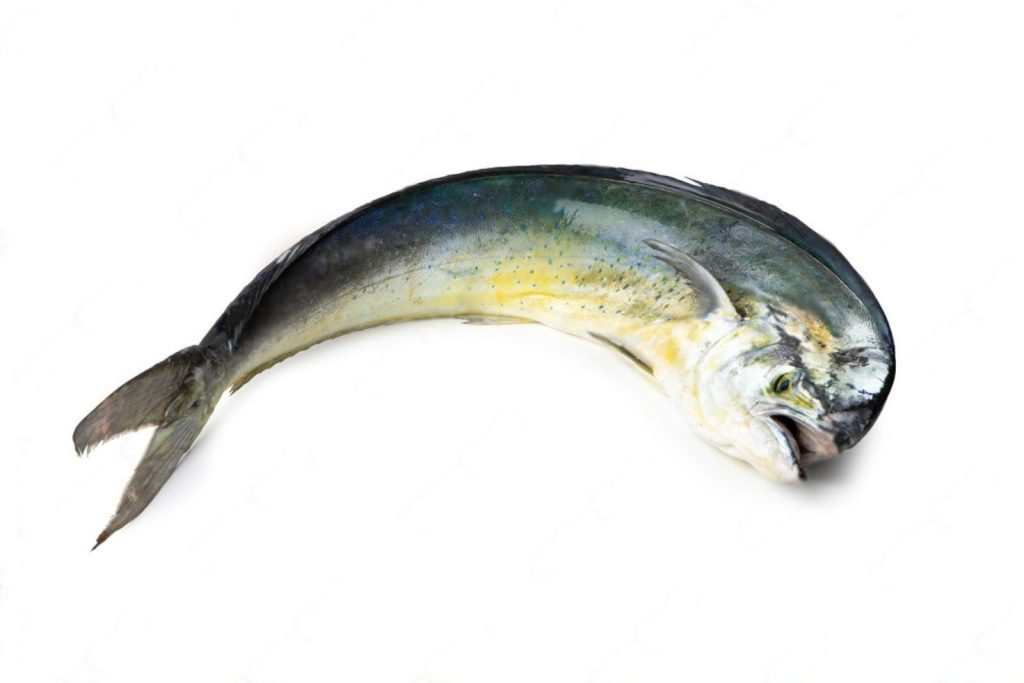
Smelt, those small, silvery fish found in freshwater and saltwater environments, are often prized for their delicate flavor and versatility in various culinary applications. Whether you catch them yourself or buy them fresh, freezing smelt can be an excellent way to preserve their quality and savor them throughout the year. This guide presents a step-by-step approach to freezing smelt, ensuring that you maintain their taste and texture for future enjoyment.
Follow these steps to freeze smelt effectively:
Step 1: Start with Fresh Smelt
When embarking on the journey of freezing smelt, the initial and vital step is the selection of fresh fish. This crucial phase sets the foundation for the ultimate quality and taste of the smelt once they’re thawed and prepared for consumption. The significance of this step lies in the fact that the condition of the smelt at the outset directly influences their flavor, texture, and overall appeal after the freezing process.
Selecting smelt with clear, vibrant eyes is a key indicator of their freshness. Cloudy or dull eyes can be a sign that the fish is past its prime and might not yield the desired taste and texture when thawed. Shiny skin is another telltale sign of a fish in good condition. The skin of fresh smelt should appear lustrous and free from blemishes or discoloration. This visual aspect is not only an aesthetic consideration but also an indicator of the fish’s overall health.
The olfactory element also comes into play during this selection process. Fresh smelt emit a clean and pleasant aroma reminiscent of the sea. A briny, ocean-like scent indicates their recent capture and quality preservation. In contrast, any off-putting or strong odor might suggest that the fish has started to deteriorate, which can lead to an unpleasant taste and odor after freezing.
Step 2: Clean and Gut the Smelt
Once you’ve procured the freshest smelt, the next crucial step in the freezing process is to ensure that these delicate fish are thoroughly cleaned and prepared for their icy preservation. Cleaning and gutting smelt not only helps maintain their taste and quality but also prevents any unwanted flavors from developing during the freezing process.
Begin by carefully removing the scales, which are the tiny, protective plates covering the fish’s skin. Scaling is an essential step, as it eliminates any lingering impurities and allows the fish’s natural flavors to shine through. You can achieve this by using a small knife, a specialized scaler, or even the back of a larger knife. Gently but firmly, work from the tail towards the head, ensuring that all scales are removed. A clean, scale-free surface is the canvas upon which the rest of your preparation will unfold.
Next, turn your attention to the fins. These rigid extensions protruding from the fish’s body can be quite sharp, so exercise caution as you remove them. Trimming the fins not only enhances the fish’s appearance but also prevents any potential hazards while handling or consuming the smelt.
Gutting the fish is perhaps the most crucial step in this cleaning process. It involves removing the entrails, which consist of the internal organs, stomach, and intestines. Gutting not only rids the smelt of potentially unpleasant odors and flavors but also ensures that the fish will freeze uniformly without any undesirable elements. You can achieve this by making a small incision along the belly of the fish and carefully removing the internal contents.
After scaling, finning, and gutting, rinse the smelt under cold running water. This step is vital to eliminate any remaining debris or blood from the fish’s interior or exterior. Thoroughly rinsing the fish not only contributes to their cleanliness but also helps prevent any potential cross-contamination during freezing.
Can I freeze smelt without cleaning them first?
It’s recommended to clean and gut smelt before freezing. Cleaning removes impurities and prevents off-flavors during storage. Freezing uncleaned smelt may compromise taste and quality.
Step 3: Prepare for Freezing
As you embark on the journey of freezing your cleaned and gutted smelt, careful preparation is key to ensuring that these delectable fish maintain their integrity and taste when they’re finally enjoyed. Before sealing them away in frosty hibernation, you have the choice to either freeze the smelt whole or to make a decision about their heads and tails, all according to your culinary preferences and convenience.
The decision of whether to leave the smelt whole or to remove the heads and tails comes down to several factors, including your intended culinary applications and the space available in your freezer. Let’s explore both options:
Option 1: Freezing Whole Smelt
Leaving the smelt whole maintains their natural appearance and structure. This can be advantageous if you plan to prepare dishes that require the smelt to be cooked intact, perhaps for grilling or baking. Freezing the whole smelt means that you’re preserving the fish as they are, capturing their essence and versatility.
Option 2: Removing Heads and Tails
On the other hand, many individuals opt to remove the heads and tails before freezing. This choice is often made for practical reasons. Smelt heads and tails can take up a significant amount of space in your freezer, which may be a consideration if storage room is limited. Additionally, removing the heads and tails can make the cooking process more convenient. Some people prefer their smelt without heads and tails for certain recipes, finding them easier to handle and consume.
Ultimately, the decision is yours, and it depends on how you envision using the smelt in your future culinary endeavors. If you’re planning to serve them whole and enjoy the full visual appeal, freezing them without any alterations might be your preferred choice. On the other hand, if you’re aiming for practicality, space-saving, or ease of preparation, removing the heads and tails before freezing can be a sensible option.
Is it better to freeze smelt whole or filleted?
Both options are valid. Freezing whole maintains appearance, suitable for grilling or baking. Filleting saves space and is convenient for certain dishes. Choose based on cooking preferences and available freezer space.
Step 4: Arrange on a Tray
Now that your smelt are cleaned, gutted, and possibly prepared according to your preference, it’s time to focus on their presentation within the freezing process. Properly arranging the smelt on a baking tray is a strategic step that contributes to the overall quality and convenience of your frozen fish.
When placing the prepared smelt on a baking tray, the goal is twofold: to prevent the fish from sticking together during freezing and to ensure efficient air circulation around each individual piece. Sticking together is a common challenge when freezing items with moisture content, and smelt are no exception. By arranging them in a single layer on the tray, you’re creating space between the fish, minimizing the chances of them freezing together into a solid clump.
Furthermore, allowing air to circulate freely around each smelt is essential. Proper air circulation helps maintain a consistent freezing temperature, which contributes to preserving the smelt’s natural texture and flavor. When each fish is given room to freeze individually, you’re preventing the formation of ice crystals that can potentially compromise the integrity of the fish’s delicate flesh.
If you’re working with a larger quantity of smelt, it’s wise to consider using multiple trays or freezing in batches. Overcrowding the tray can hinder proper air circulation and lead to uneven freezing. By distributing the smelt across several trays, you’re ensuring that each fish benefits from the optimal freezing conditions you’ve created.
Step 5: Place in the Freezer
With your smelt meticulously arranged on the baking tray, it’s time to introduce them to their chilly sanctuary—the freezer. However, this step isn’t just about preserving the fish; it’s about doing so in a way that ensures the highest quality of taste and texture when they’re ultimately enjoyed.
The initial freezing process is a critical part of the smelt preservation journey, and it’s often referred to as “flash-freezing.” Flash-freezing involves rapidly reducing the temperature of the smelt to very low levels, typically within an hour or so. This swift drop in temperature is beneficial for several reasons:
- Prevention of Clumping: Placing the baking tray of smelt in the freezer for flash-freezing serves as an ingenious strategy to prevent the fish from clumping together. As individual fish freeze quickly, they maintain their individual shapes and structures. This prevents the smelt from adhering to each other, ensuring that when it’s time to thaw and use them, you won’t be dealing with a frozen mass that’s difficult to separate.
- Preservation of Texture and Taste: Flash-freezing contributes to maintaining the smelt’s desired texture and taste. Rapid freezing forms smaller ice crystals within the fish’s cells, which minimizes the damage to the delicate cellular structure. This, in turn, helps preserve the natural texture of the fish once it’s thawed and cooked. Moreover, by freezing quickly, you’re locking in the smelt’s inherent flavors, ensuring that their taste remains as vibrant and delightful as the moment they were prepared for freezing.
By giving your smelt the opportunity to undergo this initial flash-freezing process, you’re taking a proactive step to ensure their overall quality. The individual freezing prevents clumping, enabling you to retrieve individual fish with ease. Furthermore, by preserving the texture and taste, you’re setting the stage for culinary creations that showcase the exceptional attributes of your smelt.
Step 6: Package the Smelt
As your smelt undergo their initial flash-freezing on the baking tray, you’re on the cusp of sealing in their excellence for the long term. Packaging the smelt correctly is an essential step in the freezing process, one that ensures their preservation, quality, and flavor until the moment you’re ready to elevate them into a delicious meal.
- Transferring to Airtight Containers: Once the smelt are individually frozen, it’s time to move them into suitable storage containers. Airtight freezer bags or vacuum-sealed bags are popular choices for this purpose. These containers offer a two-fold advantage: they protect the smelt from exposure to air, which can lead to freezer burn, and they maintain a controlled environment that prevents the infiltration of unwanted odors or flavors.
- Minimizing Air for Quality: When you’re placing the smelt into these containers, a crucial step is to minimize the amount of air present. Excess air in the packaging can contribute to freezer burn, a condition where the fish’s surface becomes dehydrated and develops a dry, unpleasant texture. To prevent this, press out as much air as possible before sealing the bags or using a vacuum sealer. This step is essential in maintaining the quality and taste of the smelt throughout their time in the freezer.
- Preserving Taste and Texture: By sealing the smelt in airtight containers with minimal air, you’re ensuring that they remain as close to their freshly frozen state as possible. The absence of air prevents moisture loss and the potential for the formation of ice crystals, both of which can compromise the texture and taste of the fish. As a result, when you eventually retrieve the smelt from the freezer, you’ll be met with fish that have retained their delicate textures and flavors.
Step 7: Label and Date
As your smelt are safely nestled in their airtight containers, you’re entering the realm of long-term frozen storage. However, before you bid them farewell in the freezer, there’s one last step that ensures you’ll be able to enjoy their culinary splendor without any doubts about their freshness or quality.
- Importance of Labeling: Labeling each package of frozen smelt with the current date is a small yet crucial detail that should not be overlooked. This seemingly minor act serves as a valuable tool in maintaining a connection between you and your frozen treasures. By marking the date on each package, you create a clear record of when the smelt were frozen. This information is a handy reference point, especially when you’re planning your meals and deciding which packages to use first.
- Storage Duration: Smelt, like many frozen foods, have an optimal storage duration. Generally, smelt can be stored in the freezer for up to three months while still retaining their quality. Beyond this point, the risk of flavor degradation and loss of texture increases. By labeling the packages with the freezing date, you’re empowered to make informed decisions about when to use the smelt to ensure the best culinary experience.
- Maintaining Freshness: Proper labeling is a simple yet effective way to keep track of your frozen smelt’s freshness. It helps you avoid the disappointment of discovering a forgotten package in the depths of your freezer, unsure of its age and quality. Instead, armed with accurate labeling, you can confidently plan your meals and select the packages that have been stored for the appropriate duration.
Step 8: Store in the Freezer
As your carefully labeled and sealed packages of smelt find their place in the frosty realm of your freezer, you’re embarking on the final phase of this freezing journey. However, the way you store your smelt within the freezer is just as significant as the steps that led you here. This step ensures that when you’re ready to transform these frozen treasures into culinary delights, you’ll be met with smelt that have maintained their exceptional quality.
- Choosing the Coldest Spot: The placement of the smelt packages within the freezer is a key consideration. To ensure the most efficient and consistent freezing, it’s best to position the packages in the coldest part of the freezer. This is usually towards the back or at the bottom, away from the door. By doing so, you’re creating an environment that optimizes the preservation of the smelt’s texture, flavor, and overall quality.
- Time and Quality: While freezing is an effective method of preserving food, it’s important to remember that even frozen items have a recommended duration for storage. Over time, the quality of the smelt may begin to decline due to factors like freezer burn, oxidation, and changes in texture. As a rule of thumb, aim to consume the frozen smelt within the recommended time frame, which is generally around three months. This duration ensures that the smelt are enjoyed at their peak quality, delivering the delectable experience you’ve worked so diligently to achieve.
- Quality Maintenance: By storing the smelt in the coldest part of your freezer and abiding by the recommended storage duration, you’re taking proactive steps to maintain their optimal quality. This attention to detail results in smelt that, when thawed and prepared, are reminiscent of their freshly frozen state. Whether you’re creating a seafood feast for a special occasion or indulging in a quick weeknight dinner, the quality of your frozen smelt will shine through.
Other related questions
How can I defrost smelt?
To defrost smelt, transfer the sealed package from the freezer to the refrigerator and allow them to thaw slowly for several hours or overnight. Alternatively, place the sealed package in a bowl of cold water and change the water every 30 minutes until the smelt are thawed. Never defrost at room temperature to ensure safety and preserve quality.
Can I refreeze smelt?
Refreezing smelt is not recommended due to quality and safety concerns. Once smelt are thawed, their texture and flavor may degrade. Refreezing increases the risk of bacterial growth and potential health hazards.
How do I know if the smelt have gone bad after being frozen?
Signs of bad frozen smelt include off-putting odors, discoloration, freezer burn (dry, discolored patches), and changes in texture like mushiness or excessive ice crystals. These indicate deterioration and potential spoilage. If any doubt exists, it’s advisable to discard the fish to ensure food safety.
Can I freeze smelt in marinades or sauces?
While possible, it’s advised to freeze smelt plain. Freezing in marinades or sauces may alter texture and flavor. Add marinades or sauces after thawing for best results in taste and quality.
Can I freeze cooked smelt?
Yes, you can freeze cooked smelt. Allow them to cool, then package and label with the date. Frozen cooked smelt can be stored for around three months. Thaw gently and consume promptly for best results.
Can I season smelt before freezing?
It’s recommended to freeze smelt plain. Seasoning before freezing can alter texture and taste due to moisture absorption. Preserve quality by adding seasoning after thawing and before cooking.








